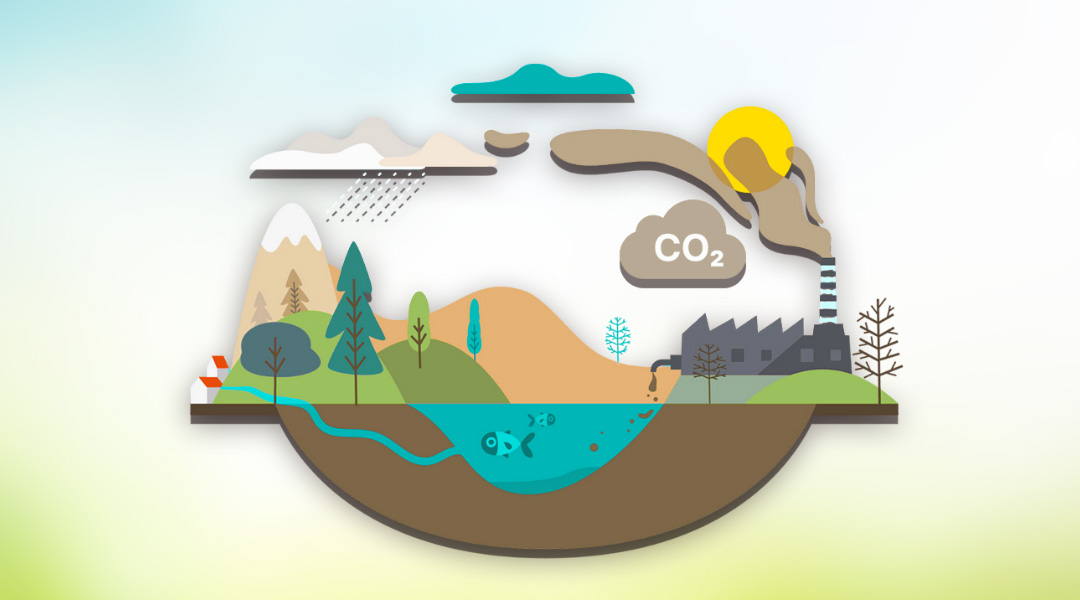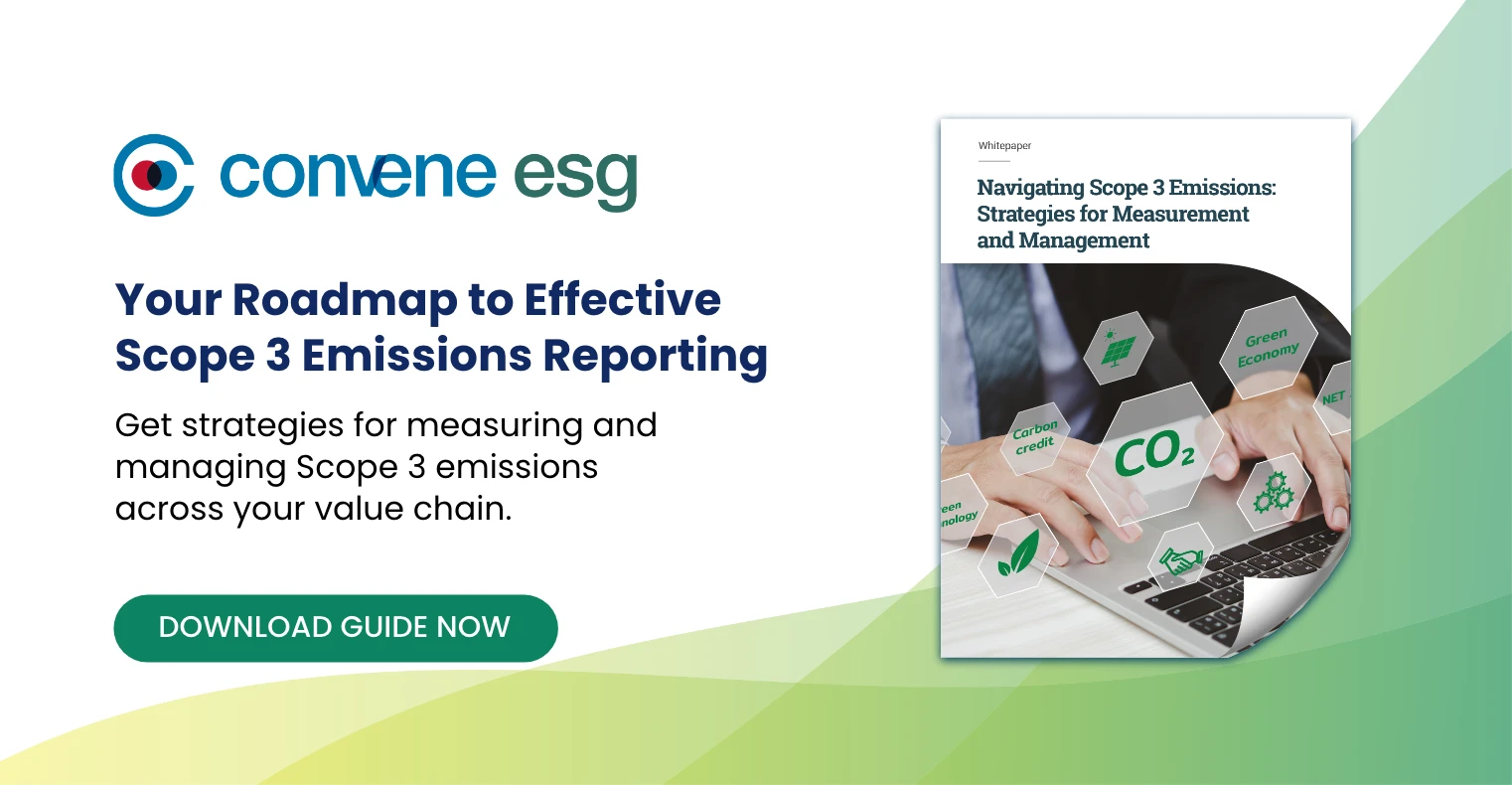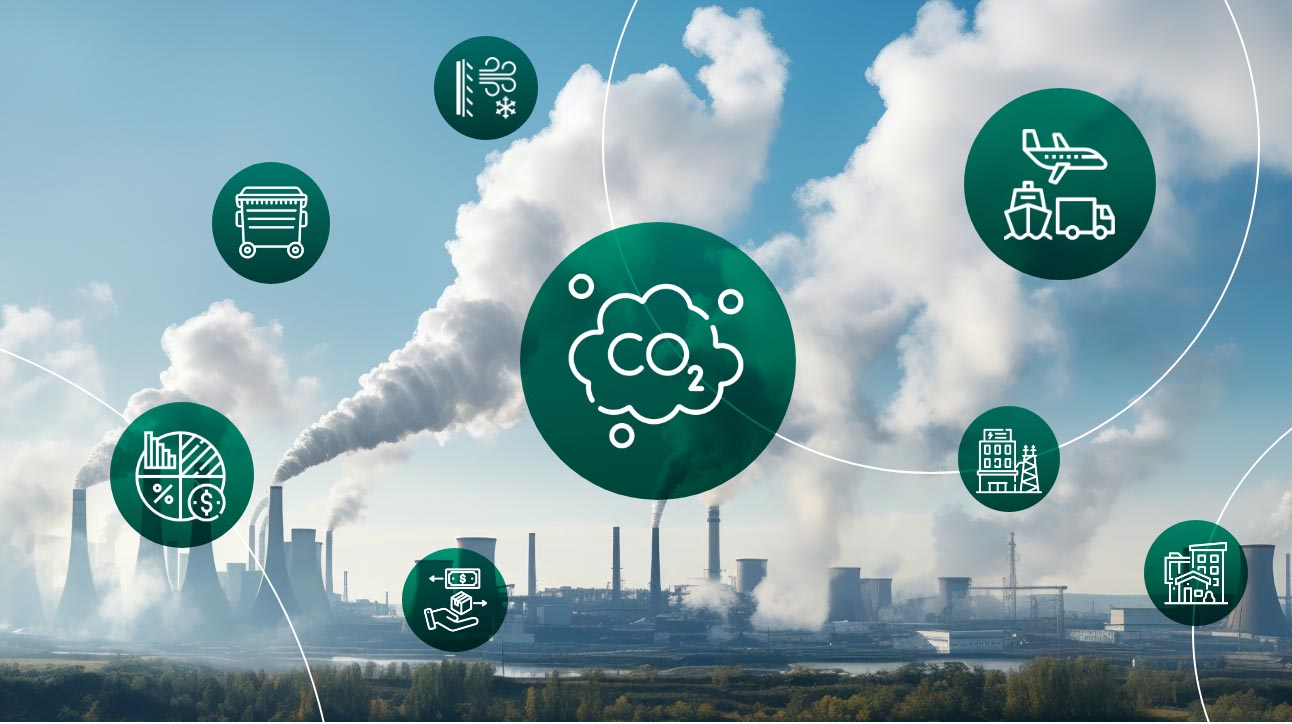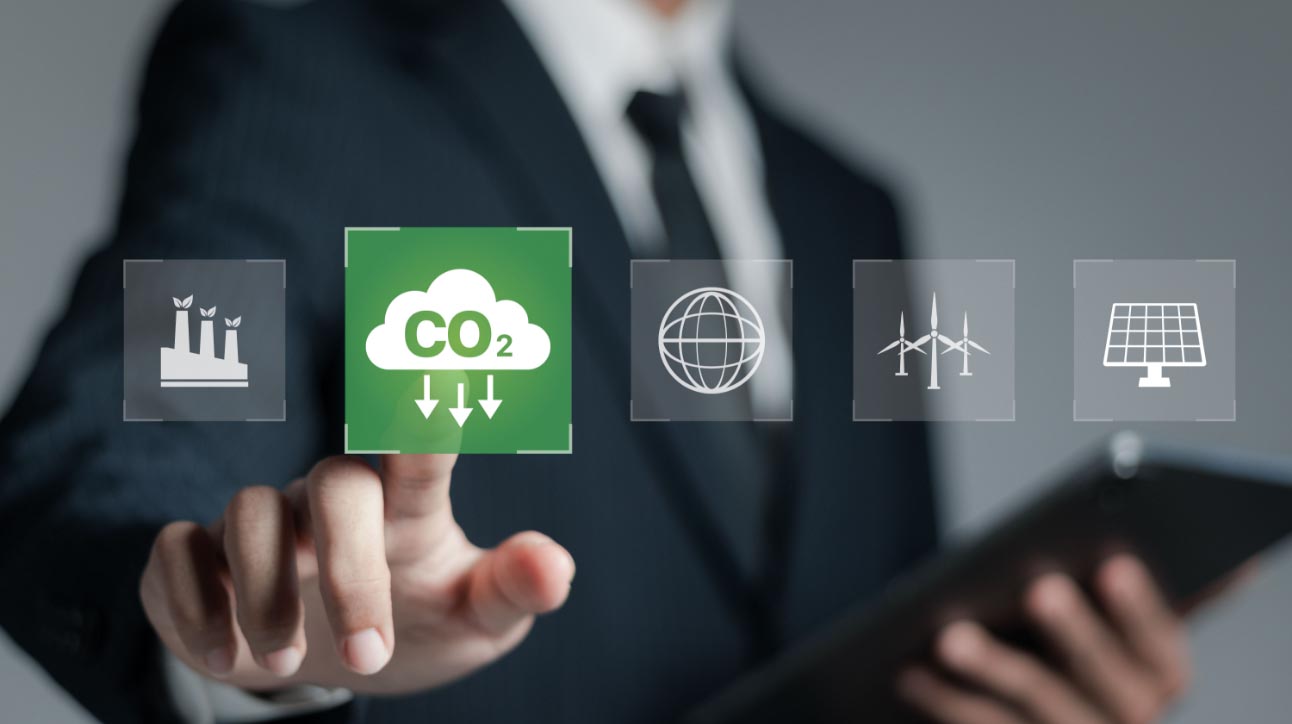The climate change conversation often revolves around what we put into the atmosphere. From cars, factories, and power plants, we talk about how corporations release greenhouse gases (GHGs). But it’s just as important to understand where these emissions go after they are released.
Across every region, natural systems quietly work to absorb carbon dioxide from the atmosphere. People are more familiar with forests as an example of these systems, but there are more of those out there, and we refer to them as carbon sinks. These are at the core of the planet’s ability to regulate climate and maintain stability in the face of human-made emissions.
Whether you’re working on your sustainability plans and strategies, or simply curious how nature works to reduce our carbon footprint, understanding what do carbon sinks do might just help some ideas sink in.
What is a carbon sink?
The simple carbon sink definition is that it is any system that absorbs more carbon dioxide (CO₂) from the atmosphere than it releases. Whether they are natural or engineered, these sinks are critical in the carbon cycle, which is the ongoing exchange of carbon between land, sea, atmosphere, and living things. They capture and store atmospheric carbon, a process known as carbon sequestration. This approach helps keep the balance of carbon in check and slows the buildup of GHG emissions that are trapped in the atmosphere and contribute to a warming planet.
It’s crucial to strike a balance between emitting CO₂ and absorbing it. Currently, this balance has shifted. Fossil fuel burning, forest destruction, and industrial processes are adding more carbon into the atmosphere than these systems can remove. It’s this imbalance that’s accelerating climate disruption.
The good thing is we already have carbon sinks, but let’s look more at what these are.
Carbon Sink Examples
Natural Carbon Sinks
Natural carbon sinks are ecosystems that are able to store carbon through biological and geological processes developed way back already. So, what do carbon sinks do?
- Forests: Trees absorb CO₂ during photosynthesis and store it in trunks, branches, roots, and soil. Globally, forests have taken in an estimated 13 billion tonnes of CO₂ each year over the last three decades, but deforestation and forest degradation reverse this benefit, releasing massive amounts of carbon back into the atmosphere. This was the case in the 2024 data, with tree cover loss at about 30 million hectares, pushing 4.1 gigatonnes of GHGs into the atmosphere.
- Oceans: Oceans absorb CO₂ directly from the air through gas exchange at the surface and marine life carbon absorption. Tiny organisms like phytoplankton absorb carbon and produce even more oxygen. While calcifying organisms, like corals and shellfish, lock carbon in their shell and skeletal structures.
- Soils: Rich, healthy soils can store a surprising amount of carbon in organic matter and minerals. But when overworked or eroded, soils lose this capacity quickly.
- Wetlands: Including peatlands, marshes, and mangroves, these ecosystems are excellent at locking away carbon. Their waterlogged environments slow decomposition, keeping carbon stored for centuries or even millennia.
Artificial Carbon Sinks
While natural systems remain the most effective at absorbing carbon, artificial carbon sinks are growing as complementary tools, especially in sectors where emissions are hard to eliminate entirely. These artificial carbon sink examples or carbon reduction solutions include:
- Carbon Capture, Use and Storage (CCUS): This approach captures CO₂ emissions from industrial sources like power plants and injects them deep underground into geological formations.
- Direct Air Capture (DAC): A more recent technology that filters CO₂ directly from ambient air and either stores it or repurposes it in other products or usage. An example is Climeworks’ upgraded DAC system that was recently tested to capture more CO₂ with less energy.
- Afforestation and Reforestation: Considered a hybrid example of a carbon sink, planting trees in new or degraded areas helps sequester atmospheric CO₂ through photosynthesis.
- Ocean Fertilisation: Adding micronutrients in certain ocean areas helps stimulate phytoplankton population growth. One common approach is iron fertilisation, which boosts phytoplankton’s carbon absorption and oxygen production.
How do carbon sinks work?
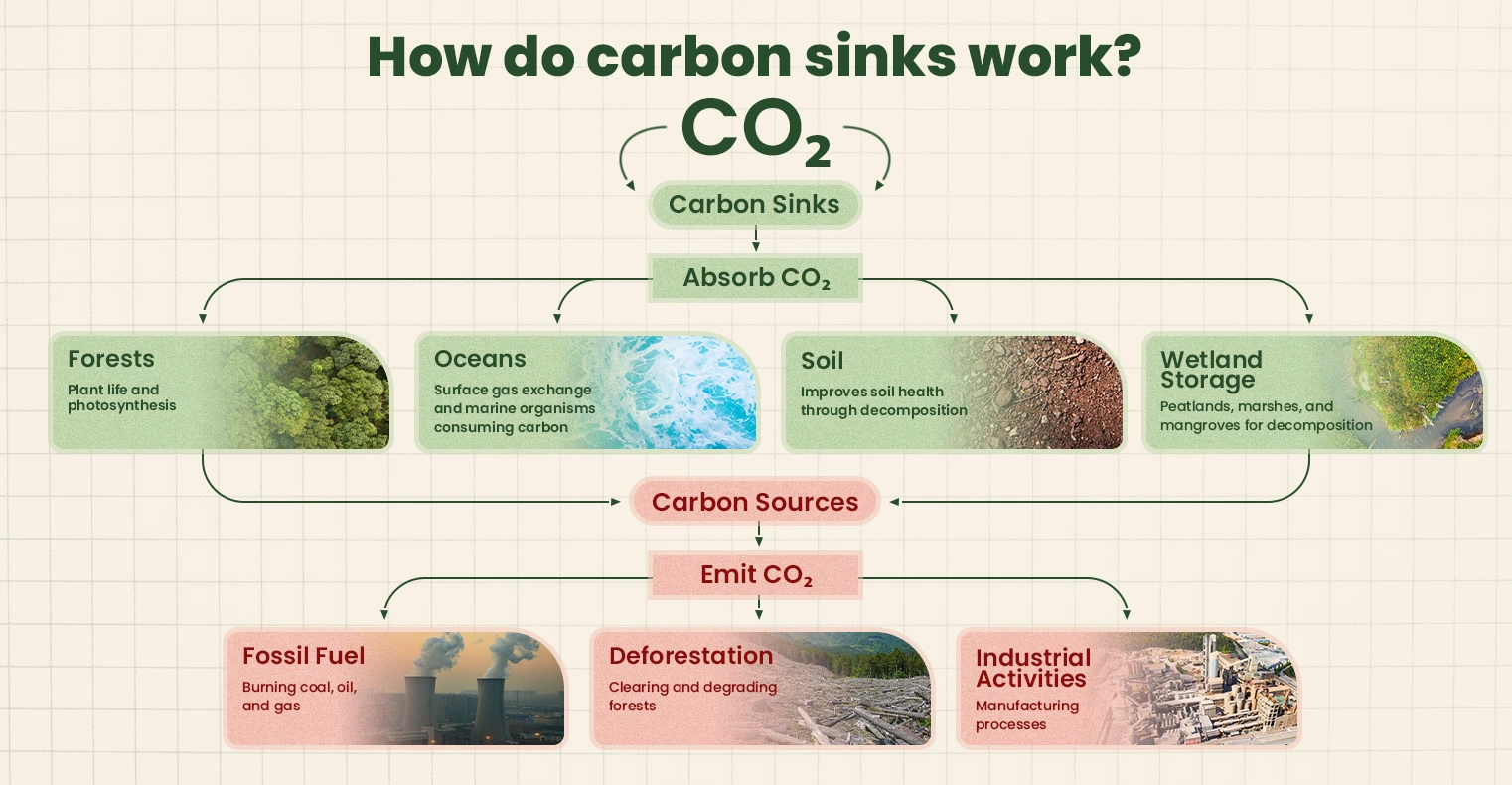
Carbon sinks operate by drawing in CO₂ and storing it in different forms. They regulate how much carbon stays in the air. Here’s what that looks like across ecosystems:
- Photosynthesis: Plants, algae, and some bacteria absorb carbon dioxide and convert it into organic matter during growth.
- Ocean Absorption: CO₂ dissolves into seawater and is taken up by marine organisms like phytoplankton and seagrasses.
- Soil Storage: Soil holds carbon in the form of organic material from decayed plants and animals. Fungi and microbes help break this matter down and lock carbon underground to improve soil health.
- Wetland Storage: In waterlogged conditions, oxygen is limited, so organic matter decomposes slowly, allowing carbon to build up over time.
Where carbon sinks absorb CO₂, carbon sources do the opposite. They release more than they absorb. Human-driven carbon sources have grown sharply since the Industrial Revolution and are now the main reason Earth’s carbon cycle is out of sync. Major contributors include:
- Fossil Fuels: Burning oil, coal, and natural gas to power transportation and operations is the largest source of man-made CO₂ emissions.
- Deforestation: When forests are cleared, not only are future carbon absorption rates lost, but the carbon stored in trees and soil is also released back into the air.
- Industrial Activities: Manufacturing and chemical processes, like cement production, release CO₂ as a byproduct.
Combined, these sources contribute more carbon than natural and artificial sinks can currently absorb, creating the imbalance behind today’s climate disruptions. When land is cleared, oceans warm, or soil is degraded, these natural rhythms are thrown off. The sinks take in less carbon, more stays in the atmosphere, and the climate warms.
Why are carbon sinks important?
Carbon sinks absorb large amounts of CO₂ and prevent it from building up in the atmosphere. In the carbon cycle, carbon moves between land, oceans, air, and living things. This happens globally, and CO₂ is just one piece of the entire cycle, which helps regulate Earth’s climate, keeps ecosystems functioning, and supports food systems.
When natural and artificial carbon sinks perform well, they help stabilise the climate by offsetting emissions from both natural and human sources. But as deforestation, ocean warming, and land degradation reduce their capacity, less carbon is absorbed. When the balance between carbon emitted and carbon absorbed shifts, as it has in recent decades, the effects are felt everywhere, from warmer oceans and drier forests to more extreme weather.
Maintaining the carbon cycle is not only to keep the planet alive, but it is also the core of decarbonisation. This is why supporting carbon sinks is one of the most natural and effective ways to prevent emissions from overwhelming our environment and destroying it.
While climate regulation is one of the benefits of carbon sinks, we also rely on them for the resources they provide. Beyond their role in absorbing CO₂, how do humans use the materials in the carbon sink? With storage and a balanced climate:
- Carbon-rich soils are more fertile and productive, supporting agriculture and food systems.
- Marine life thrives in healthy waters, supporting fisheries and marine biodiversity.
- Forests and oceans contribute to global oxygen production through photosynthesis.
These functions support and provide food security, forest and marine resources, and oxygen production for all organisms.
Why is the carbon cycle out of balance?
Human activities, particularly the burning of fossil fuels, deforestation, and industrial processes, have significantly increased CO₂ emissions. Natural carbon sinks are being degraded or destroyed, reducing their ability to absorb CO₂. In 2023, forests and other terrestrial sinks absorbed far less CO₂ than usual. Droughts, heatwaves, and fires all played a role in this. When land is cleared, oceans warm, or soil is degraded, these natural rhythms are thrown off. Repeated damage to ecosystems causes temporary disruption and undermines their long-term function as carbon sinks. According to the National Oceanic and Atmospheric Administration, carbon levels jumped by 27% in 2024. This means that, as sinks take in less carbon, more stays in the atmosphere. This imbalance leads to higher atmospheric CO₂ concentrations, making ecosystems less efficient at CO₂ absorption and contributing further to climate change.
What happens to excess carbon?
If the carbon cycle remains out of balance, excess carbon is released in the atmosphere, contributing to global warming and climate change. Other environmental systems that will be affected include:
Greenhouse Effect
Similar to a greenhouse structure, heat is continuously trapped inside to make the environment habitable. But when there is excess carbon, it further heats the atmosphere. This scenario leads to dangerously high global temperatures, melting ice caps, sea-level rise, and more frequent extreme weather events. We are urged to maximise our efforts in decarbonising emissions, given the potential rise of global temperature of up to 3.1°C by century’s end. To think 1.5°C was the target in the Paris Agreement, we are currently way off track.
Ocean Acidification
Increased carbon levels result in higher concentrations of carbonic acid in the oceans, which negatively affects marine life by harming the ability of calcifying organisms, or creatures that use calcium and carbonate to create shells, skeletons, and corals, to produce their shells and skeletons. Ocean conditions will also damage the phytoplankton population.
These approaches can help, but they require planning, oversight, and often, a significant amount of investment. Their success depends on scale, technology maturity, and long-term political and economic support.
What can we do to protect our carbon sinks?
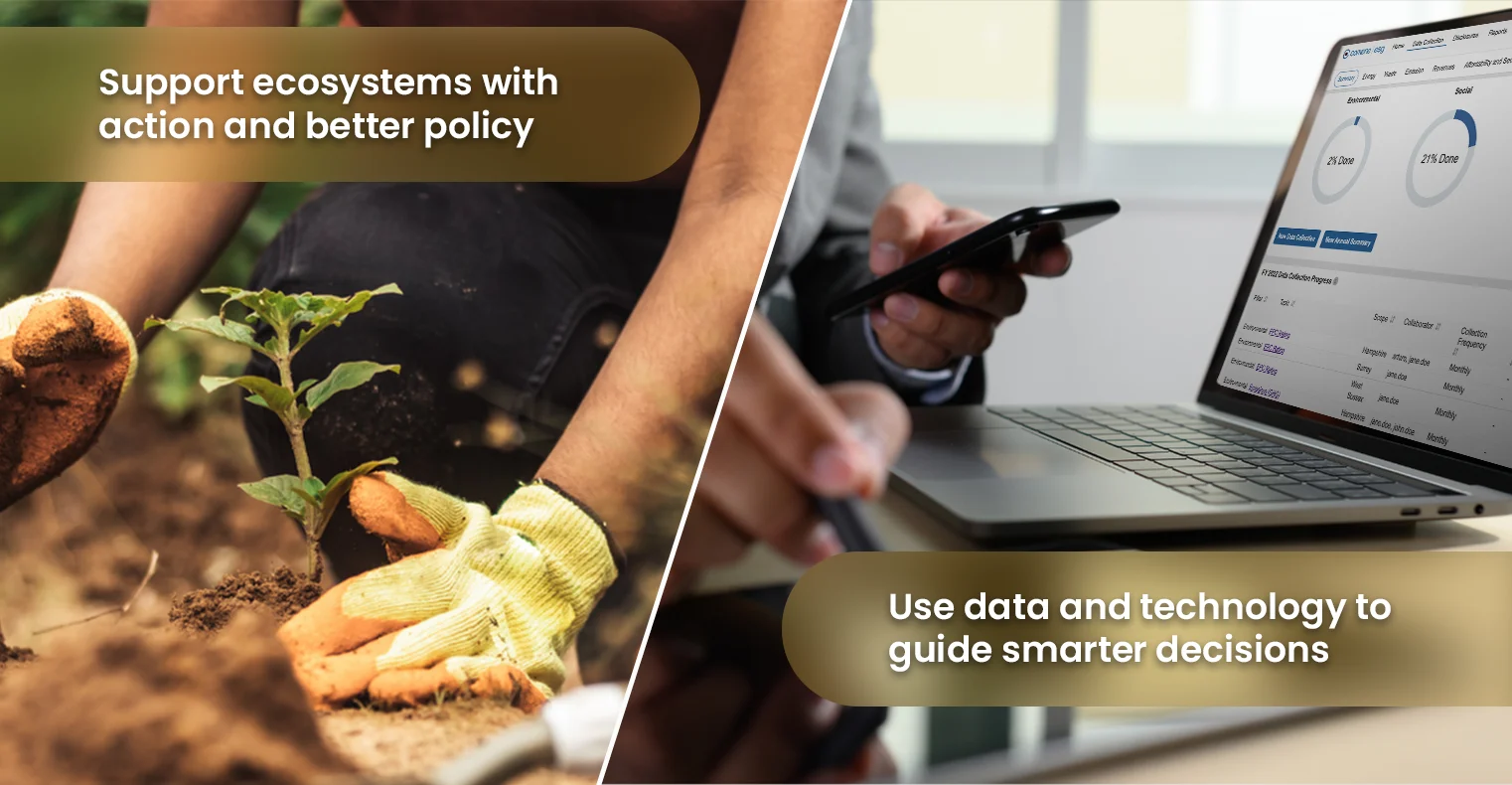
Protecting carbon sinks does not require a breakthrough. It simply involves maintaining the existing systems that are already effective. This means reducing emissions, conserving existing sinks from further damage, and restoring damaged ecosystems.
Support ecosystems with action and better policy
Forests, wetlands, and soils naturally pull carbon from the atmosphere. When restored, these landscapes can provide impactful results. Reforestation projects alone could absorb billions of tonnes of CO₂ a year worldwide. But these nature-based solutions work best when combined with smart policies that prevent degradation and support sustainable land use.
To strengthen carbon sinks through policy, we can:
- Promote responsible forestry: Replace widespread deforestation with selective or regulated harvesting and protect mature forests. This conserves biodiversity and also keeps long-term carbon storage intact.
- Expanding regenerative farming: Support farmers who use innovative methods for planting and managing crops while minimising low-till farming. These practices improve the soil’s ability to hold carbon, and this can be encouraged through financial and research support and local programmes.
- Accelerating clean energy transitions: Investing in solar, wind, and other low-carbon energy options reduces pressure on natural carbon storage. It lowers the use of fossil fuels and cuts emissions at their source.
Use data and technology to guide smarter decisions
Knowing where emissions come from and how ecosystems are responding is a big step in addressing our carbon footprint crisis. The GHG Protocol and the Partnership for Carbon Accounting Financials (PCAF) help organisations measure and map their carbon impact across operations, supply chains, and investments.
This kind of data is no longer for internal use alone. Levelling up with ESG reporting, companies show transparency, accountability, and climate responsibility to regulators, investors, and the public. Reliable ESG reporting software can optimise the entire process by collecting emissions data, aligning it with global standards, and turning it into insights that guide strategies. It connects environmental accountability with broader governance and risk metrics
Boost Your Climate Strategies with Convene ESG
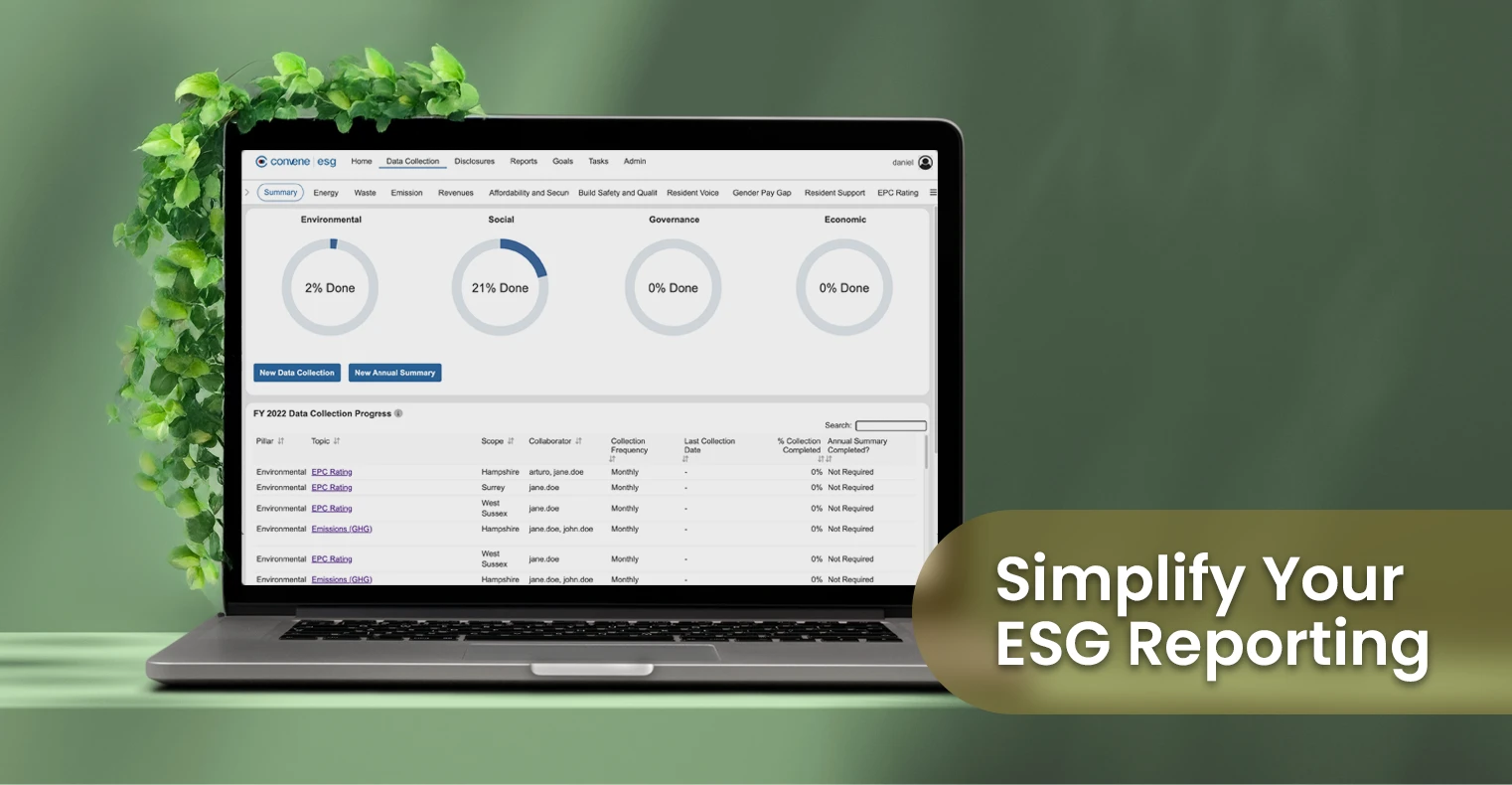
While carbon sinks already play a significant role in decarbonisation, society must maintain their integrity and optimise their effectiveness. Protecting carbon sinks requires smarter decisions, which in turn demand greater efforts and support.
ESG reporting contributes to this effort, as more organisations are looking beyond emissions offsets and focusing on long-term impacts. Technology like Convene ESG helps turn environmental data into actionable insights and effective actions. With automated tracking of data, alignment to global standards, and full Scope 1, 2, and 3 visibility, this ESG software supports clear, consistent ESG reporting while uncovering where your strategy can better equip your company. From mapping ecosystem impact to informing policy and risk, it deeply connects climate accountability with meaningful and measurable progress.
Start reporting smarter, and book a demo to see how ESG data can drive climate action.
Pat is a Content Writer, focusing on informative and purposeful content for Convene ESG. She has written for sustainable living and art exhibitions, and took part in research and communication projects linked to the UN's Sustainable Development Goals, further diving her into sustainability and ESG values. Outside of marketing and content, she explores new subjects in film, drawing, and occasional overthinking.
